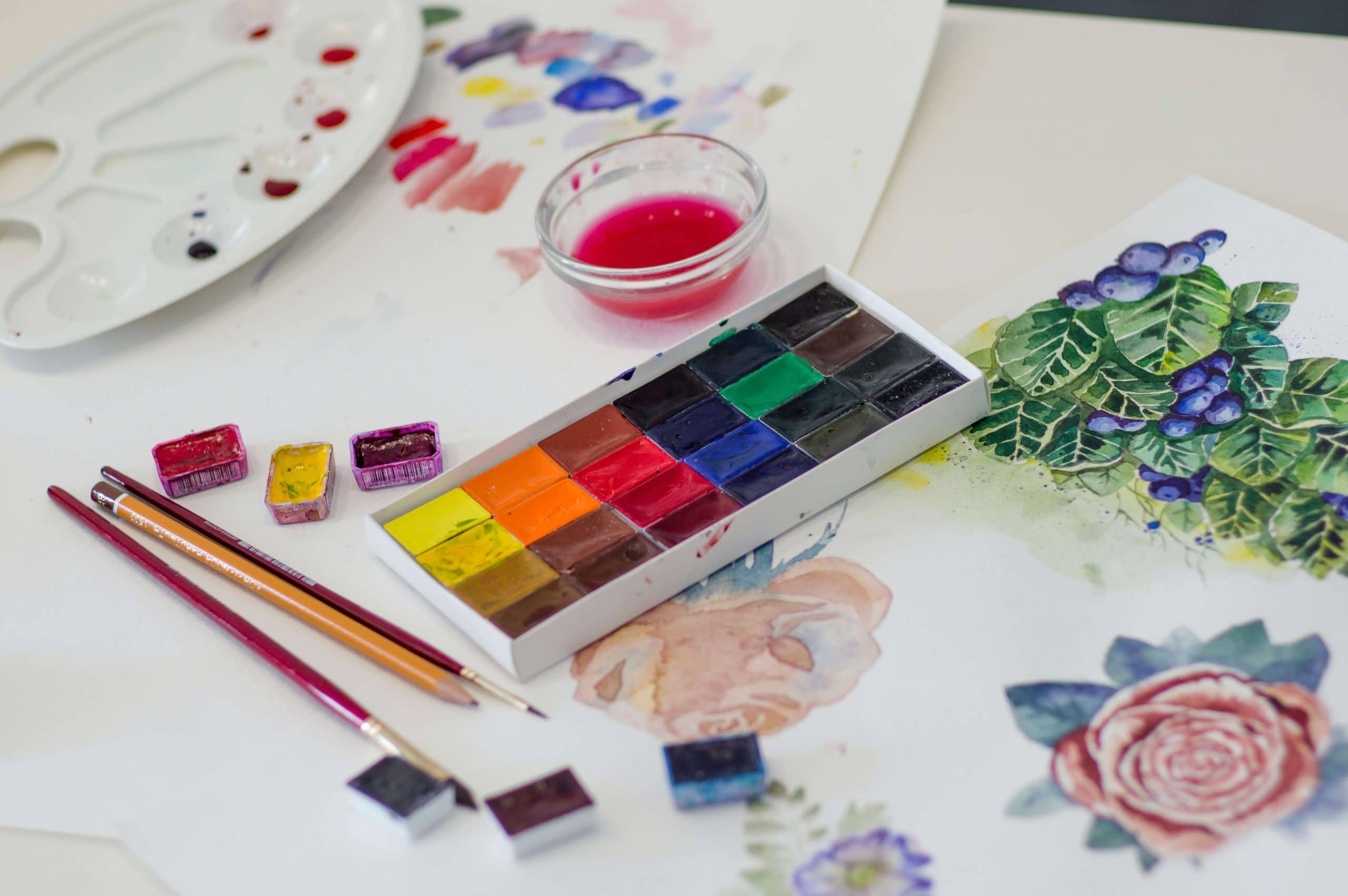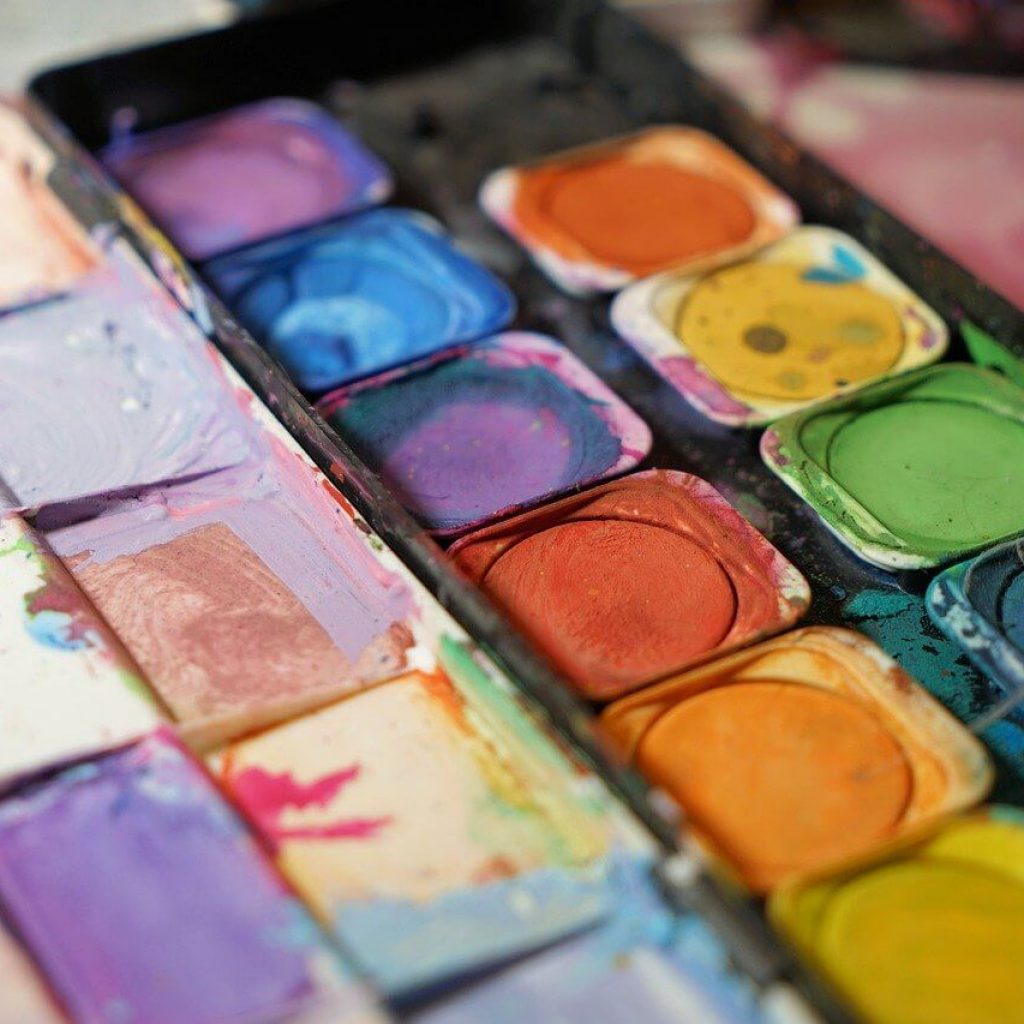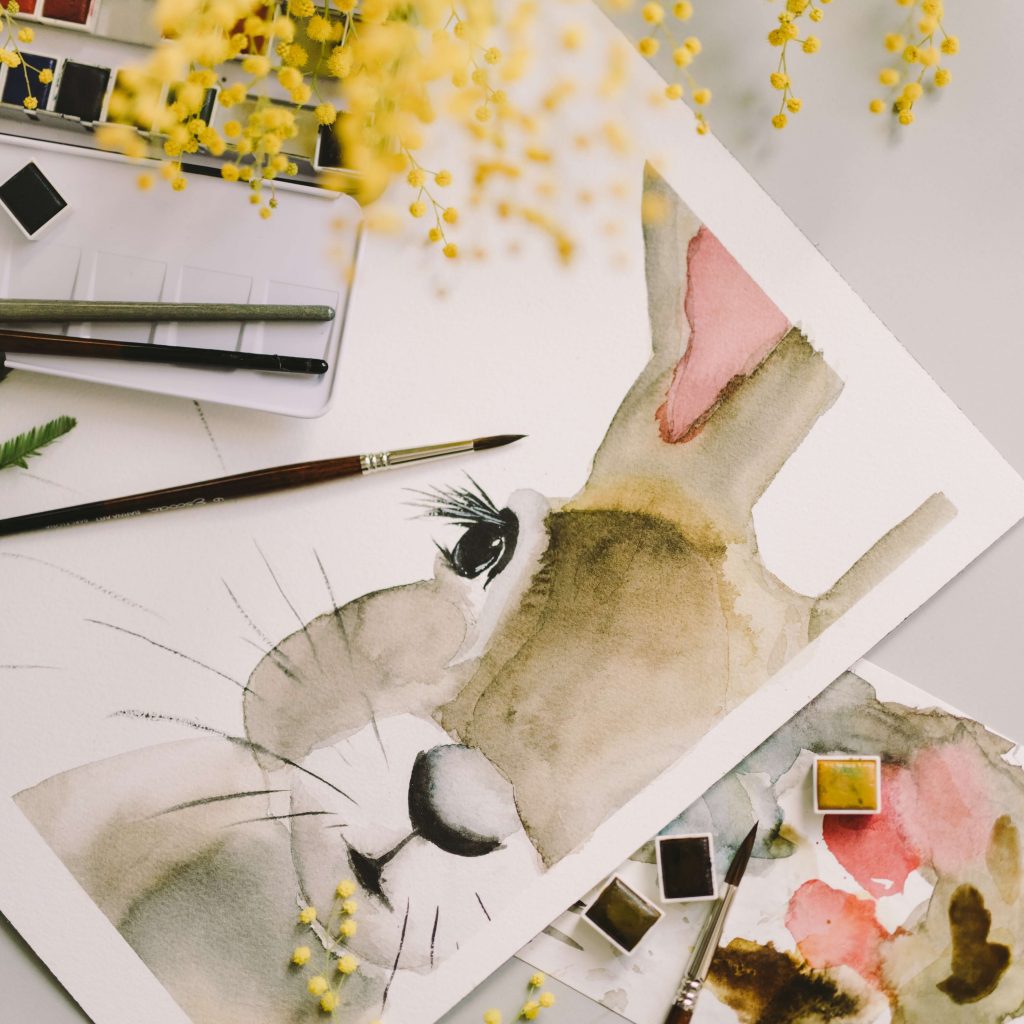
Watercolors are associated with a very impressive, yet difficult painting technique. How to start painting with watercolors in order not to get discouraged and to catch the bug?
Painting with watercolors requires knowledge of several tricks and many hours of practice. The technique is not easy and intuitive. However, it is worth to approach it with patience, and then it will repay us with a unique effect.
Painting with watercolors is not an activity for the fussy. If someone has no patience, it is better to choose another painting technique. Theoretical preparation can change a lot in the effects of work with a brush and canvas. With the help comes indispensable, free and abounding in all kinds of knowledge YouTube. We can find there a lot of tutorials and guides, which will lead us step by step through the process of creating watercolors.
For fans of more traditional solutions, books and publications on painting with watercolors come with help. “Hobby that can be art” by Stan Smith, “Watercolor for beginners” by Olesiejuk Publishers, or “Watercolor. Landscapes. Painting Course” by Dowden Joe Francis are just some of the many editions available.
In the first place is paper. It is thanks to it that painting with watercolors gives the amazing effect of blurring. It is best to get a block dedicated to painting with watercolor and watercolor paints
The paper should be thick – with a high weight, rough structure and strong enough not to tear. No ordinary paper is suitable for this purpose, e.g. the one used for printing. Smooth surface prevents proper water absorption. That is why paintings made on it can break, and certainly they ripple unsightly.
A little less demanding to explore are the paints themselves. Fortunately, also the cheapest variants are suitable for practice. Cheap watercolor paints are not as well pigmented as professional paints. Expensive paint has purer color, less fading and is more durable. At the beginning of your watercolor adventure, there is no need to buy an expensive palette.
In all painting techniques brush is not without importance. A lot depends on this tool. Soft bristle brushes are best for painting with watercolors. You should pay attention to the fact that the brush absorbs well – both water and paint.

Water is life. Also the long life of a watercolor that we will be happy with. If we already have the right quality paper, we can start experimenting with water. It is worthwhile to spend some time and observe how the paper behaves and how the painting looks when a certain amount of water is applied.
Adding too much liquid will cause the paper to clump. If the ratio of water to paint is too small, you lose the watercolor effect. There should be exactly enough water so that the paper doesn’t get wet and at the same time so that the applied layers of paint are semi-transparent and light. Unfortunately, there is no clear ratio of how much water is needed for how much paint. We have to figure it out by trial and error, a bit by feel.

When starting the adventure with watercolors, it is a good idea to prepare a sketch before the actual painting. The drawing can be done with a pencil (then it won’t be visible after the paint is applied) or with a thin pen or marker. In the latter option you will get a clear outline of the painting.
At the start, it is worth knowing about two techniques of painting with watercolors. Wet-on-wet and wet-on-dry.
First of all: mixing colors. You can mix paints together on a palette and then apply them to paper. However, a more interesting and professional effect will be obtained, mixing the colors directly on the painting.
If there is excess water, you can collect it with a paper towel. This will give a blurred effect, which is good for painting clouds and water.
If you want to get watercolor stains, you can use kitchen salt. Simply sprinkle it on the wet work, wait for it to dry, and then shake off the excess.